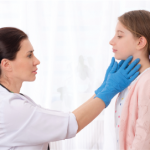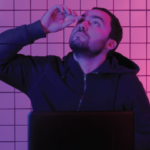The mainstay of dry eyes remains “artificial tears” and recognition/treatment of blepharitis. A trip to the local pharmacy will reveal an intimidating floor-to-ceiling display of an array of brands of artificial tear products that vary in preservative, “wetting agent” and price. The average rheumatologist offers the sage advice to “try a few different types and see what you like best.”
Although we can advise about the latest genetic polymorphism reported in the journals, we remain clueless about how to advise the patient on rationally treating their ocular “disability.”
A wide variety of artificial tears have gone through clinical trials, and some promising new candidates are nearing FDA approval, but we will still have a wide gap between patient complaints and adequate therapy. Also, novel approaches, such as electrical stimulation of lacrimal glands, are being investigated.
However, I think the main breakthroughs in the next decade for the majority of SS patients will come with improved understanding of how the brain perceives the sensation of dryness at the cortical level (discussed below), because we see an enormous overlap between patients with symptoms and relatively few objective signs, and patients with dysfunctional tear films, but few symptoms.
The ocular receptors mediating dryness (evaporative loss) have been cloned, and their neural circuits have been mapped. However, the time has come to apply the lessons of neurochemistry and neuropathology to the humble task of “cracking the therapeutic code” of dry eye discomfort, which is not nearly as seductive a topic for research grants as demyelinating disorders, but has a much greater social and economic impact.
Dry mouth and dental decay remain enormous expenses (such as dental implants) that are not covered by medical or dental insurance. We do not have time to even take into account the disruptions of social interactions when patients cannot socialize around food with their friends and families. Given that approximately 90% of SS patients are female, this impact is critical.
Although not about Sjögren’s syndrome directly, the movie Eat Drink Man Woman, produced by Ang Lee, poignantly called attention to the important social relationships around food and socialization. This film examines the social interactions at family dinners and their importance in the culture and socialization of the family when the father (a chef) loses his ability to taste or smell the food he prepares. An SS patient cannot enjoy the same foods or even chew the same meat as others. Thus, their participation in the important social interactions around food is limited, and they withdraw from this important social support system, which is paramount to their overall emotional well-being.


